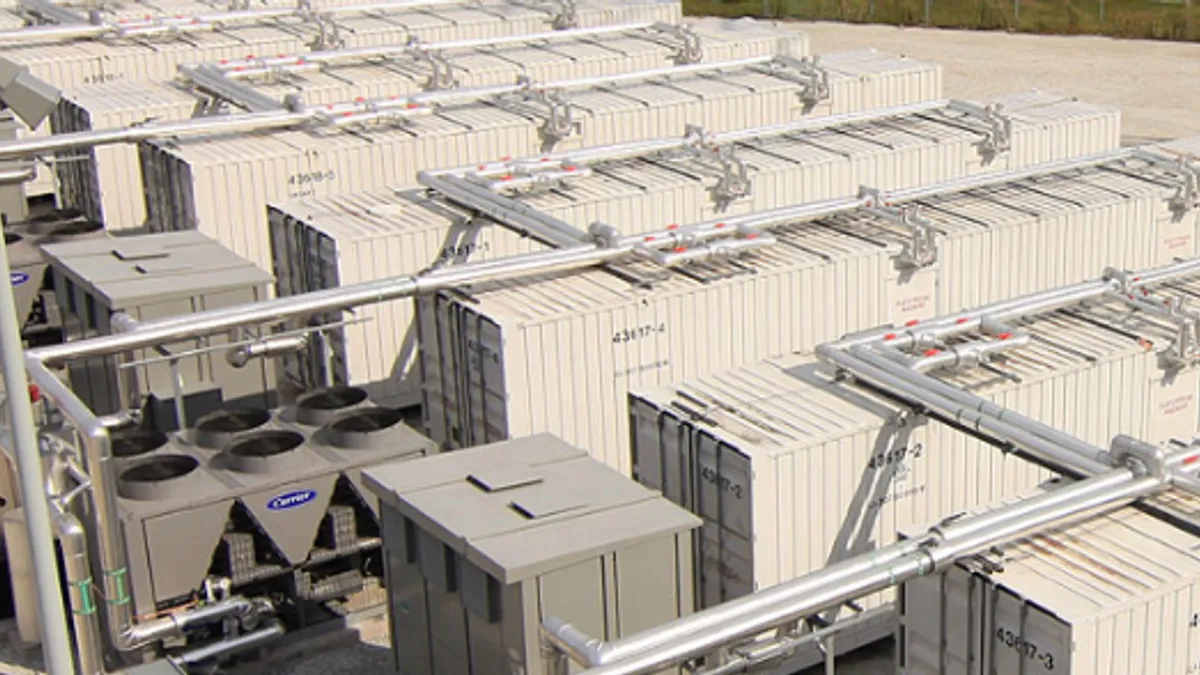Dive Brief:
- Widespread grid-scale energy storage is still in the distant future, according to one energy company executive. GE Director Mark Wight told Greentech Media battery technology is not yet cost-effective enough to compete against low-cost natural gas and high efficiency, fast-reacting turbines. New turbines can ramp to full plant load capacity in less than 30 minutes and next-generation technologies will ramp faster.
- Grid-scale energy storage advocates say it is cost-competitive because each megawatt of battery storage capacity replaces 10 megawatts of gas peaker capacity and battery storage can ramp in milliseconds, allowing it to compete for higher-priced grid services like frequency regulation and spinning reserves.
- Storage advocates also argue that economies of scale, driven by California’s mandate for 1.32 gigawatts of energy storage by 2020, Southern California Edison’s LCR solicitation, and Hawaii Electric’s RFP for up to 200 megawatts of energy storage will drive prices down. Market research predicts cost-competitive grid-scale storage prices in some states by 2018.
Dive Insight:
Natural gas market prices continue to hover below $4 per million British thermal units.
GE’s peaker units ramp up and down efficiently, allowing them to provide spinning reserves without a cost penalty. GE also offers battery storage products but Wight foresees it primarily as a consumer-scale solution.
Battery advocates say their technologies will scale readily, with 5 megawatt and 10 megawatt installations expected by 2016 to 2018.
Seven grid-scale energy storage companies were named in the Cleantech Group’s Global Cleantech 100 report as innovation and market potential leaders: Ambri, Younicos, Aquion Energy, Imprint Energy, Ioxus, Sonnenbatterie and Stem.













